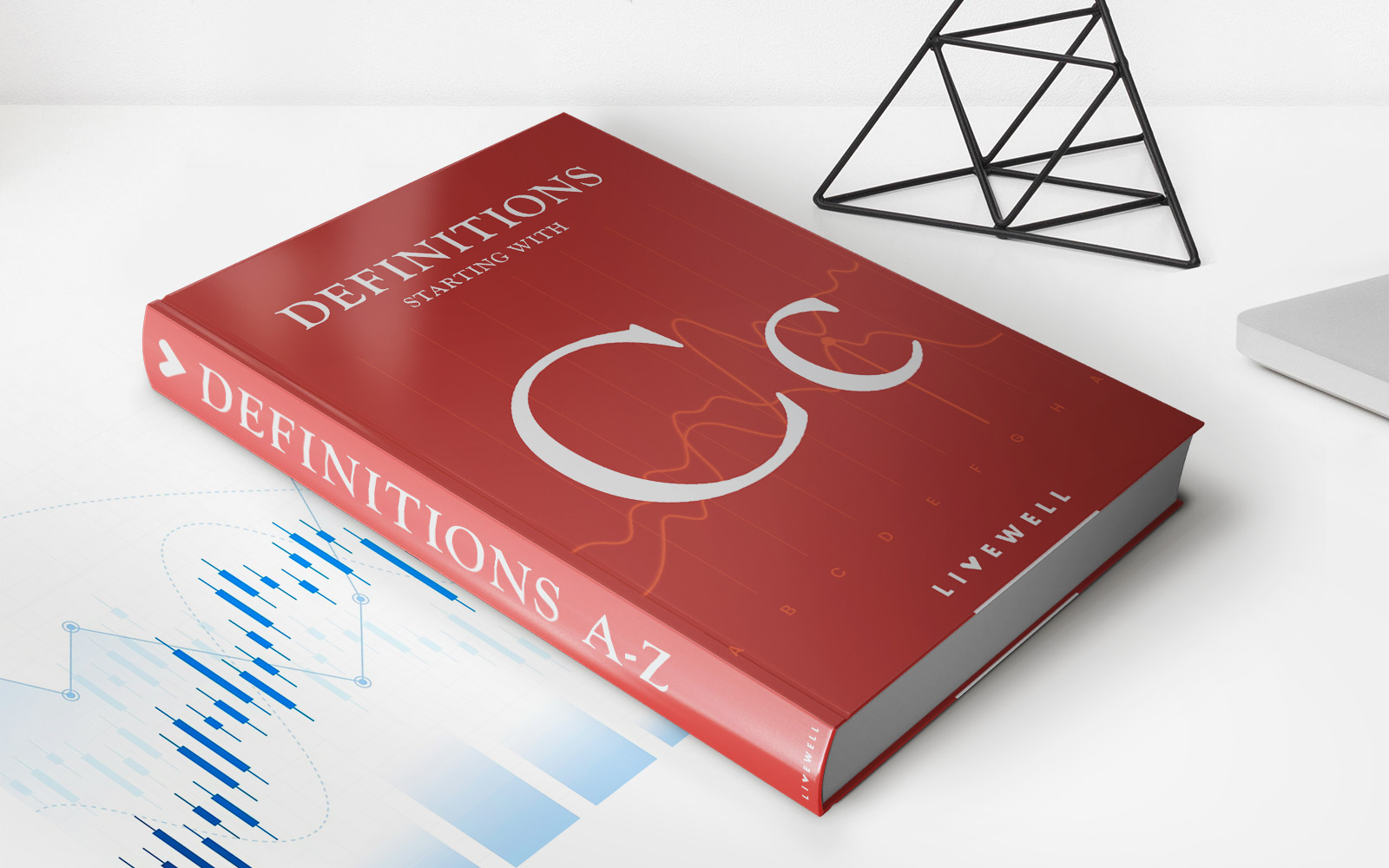

Finance
What Is Life Insurance Conversion?
Published: November 19, 2023
Discover the key aspects of life insurance conversion and how it can benefit your personal finance goals. Gain insights into transforming your policy and securing financial stability for the future.
(Many of the links in this article redirect to a specific reviewed product. Your purchase of these products through affiliate links helps to generate commission for LiveWell, at no extra cost. Learn more)
Table of Contents
Introduction
Welcome to the world of life insurance conversion, where policyholders have the opportunity to transform their existing life insurance coverage into a different form that better suits their needs. Life insurance conversion is an important option available to individuals who want to make changes to their life insurance policies without starting from scratch.
Life insurance is a financial safety net that provides protection for your loved ones in the event of your passing. It ensures that your family will be financially supported and able to maintain their quality of life even in your absence. However, circumstances can change over time, and the policy that was once suitable for you may no longer align with your current needs and goals.
This is where life insurance conversion steps in. It allows policyholders to alter the terms and features of their existing life insurance policy without undergoing a medical examination or purchasing a new policy altogether. Life insurance conversion can be a valuable option for individuals who have experienced significant life changes, such as reaching retirement age, experiencing changes in health, or needing a different type of coverage.
In this article, we will delve into the ins and outs of life insurance conversion. We will explore the different types of life insurance conversion available, how the process works, and the benefits it offers. We will also discuss the factors you should consider before deciding to convert your life insurance policy. So, let’s dive in and discover how life insurance conversion can serve as a powerful tool in protecting your family’s future.
What is Life Insurance Conversion?
Life insurance conversion refers to the process of changing an existing life insurance policy into a different form or type of policy. It allows policyholders to make modifications to their coverage without the need for a new application or undergoing another round of medical underwriting.
When you convert your life insurance policy, you essentially exchange your current policy for a new one that better aligns with your changing needs. The conversion option is typically offered as a feature within permanent life insurance policies, such as whole life insurance or universal life insurance.
Life insurance conversion provides flexibility and ensures that you can adjust your coverage as your circumstances evolve over time. It allows you to tailor your life insurance policy to fit your changing financial goals, family dynamics, or health conditions without the hassle of starting from scratch.
One of the main benefits of life insurance conversion is that it eliminates the need for a medical examination. This can be particularly advantageous if your health has deteriorated since you first purchased your life insurance policy. Without conversion, you may find it challenging or even impossible to qualify for a new policy at the same coverage level due to the changes in your health.
It’s important to note that the terms and availability of life insurance conversion can vary depending on the insurance company and the specific policy you hold. Some policies may allow you to convert the entire face value of your policy, while others may impose limits on the amount you can convert. Additionally, there may be time restrictions on when you can exercise the conversion option, so it’s crucial to carefully review the terms of your policy.
In the next section, we will explore the reasons why individuals choose to convert their life insurance policies and the different types of conversion options available.
Why Convert Life Insurance?
Life insurance conversion offers policyholders the opportunity to modify their coverage to better align with their current needs and circumstances. There are several reasons why individuals choose to convert their life insurance policies:
- Change in Health: One common reason to convert a life insurance policy is a change in health. If you have developed a health condition or experienced a decline in your health since purchasing your policy, converting to a new policy can help ensure that you maintain coverage and potentially receive better rates.
- Desire for Different Policy Type: Another reason to convert life insurance is a desire for a different type of policy. For example, you may realize that a different type of permanent life insurance policy, such as whole life insurance, better suits your financial goals and offers additional benefits like cash value accumulation.
- Adjusting Premium Payments: Converting a life insurance policy can also help policyholders adjust their premium payments. If you find that your current premium payment is no longer affordable or sustainable, converting to a different policy with more favorable premium terms can provide financial relief while still maintaining essential coverage.
- Policy Maturity: Some life insurance policies have a maturity date where the coverage ends. When reaching this point, converting the policy allows you to continue your coverage and avoid the termination of your policy.
- Changes in Financial Goals: Over time, your financial goals and responsibilities may change. Perhaps you now have dependents or significant financial obligations that require higher coverage amounts. Converting your life insurance policy can help ensure that your coverage adequately reflects your current financial situation.
Life insurance conversion provides policyholders with the ability to adapt to the ever-changing realities of life. It allows you to maintain essential coverage, customize your policy to fit your needs, and take advantage of new policy features or benefits that may be more appropriate for you.
In the next section, we will explore the various types of life insurance conversion available to policyholders.
Types of Life Insurance Conversion
When it comes to life insurance conversion, policyholders have a few different options to consider. The specific types of conversion available will depend on the insurance company and the type of policy you currently hold. Here are the most common types of life insurance conversion:
- Conversion within the Same Insurance Company: This type of conversion allows you to switch from one policy within the same insurance company to another without changing insurance providers. For example, if you have a term life insurance policy with an option to convert to a permanent policy, you can exercise this feature and switch to a whole life or universal life insurance policy from the same insurer.
- Conversion to a Different Type of Policy: Another type of life insurance conversion involves transitioning from one type of policy to another. For instance, you may have a term life insurance policy and choose to convert it to a permanent life insurance policy such as whole life or universal life.
- Conversion to a Reduced Paid-Up Policy: Some policies offer the option to convert to a reduced paid-up policy. With this conversion, you can stop paying premiums and convert the remaining cash value of your policy into a smaller, fully paid-up policy. While the death benefit will be reduced, you will no longer have to make premium payments.
- Conversion to Annuity: In some cases, policyholders have the option to convert their life insurance policy into an annuity. An annuity provides a regular stream of income over a specified period or for the remainder of your life. This can be a suitable option for individuals who desire guaranteed income in retirement.
It’s important to carefully review the terms of your life insurance policy to understand the conversion options available to you. Additionally, consider consulting with a financial advisor or an insurance professional who can guide you through the conversion process and help you make an informed decision based on your unique circumstances.
Next, let’s explore how the life insurance conversion process works.
How Does Life Insurance Conversion Work?
Life insurance conversion typically involves a straightforward process that allows policyholders to transition from their existing policy to a new one without the need for additional underwriting or a medical examination. Here are the general steps involved in the life insurance conversion process:
- Review Your Policy: Start by reviewing your current life insurance policy to determine if it offers a conversion option. Look for any specific requirements or limitations, such as the time frame within which you must exercise the conversion option.
- Contact Your Insurance Company: Reach out to your insurance company or agent to express your interest in converting your life insurance policy. They will provide you with the necessary paperwork and guide you through the conversion process.
- Choose the New Policy: Decide on the type of policy you want to convert to. This could involve selecting a different policy within the same insurance company or transitioning to a new company altogether.
- Complete the Conversion Application: Fill out the conversion application provided by the insurance company. This may require providing personal information, policy details, and any additional documentation requested.
- Pay the Premium: In most cases, you will be required to pay the premium for the new policy. The amount will depend on factors such as your age, health, and the coverage amount you select. However, the conversion process typically allows you to bypass the medical underwriting process.
- Review and Sign the New Policy: Once approved, carefully review the terms and conditions of the new policy. Ensure that it meets your needs and aligns with your financial goals. If satisfied, sign the new policy documents.
- Cancel or Adjust the Old Policy: Depending on the terms of the conversion, you may need to cancel your old policy once the new policy is in effect. Alternatively, you may have the option to adjust the coverage or premium payment on your old policy to complement your new coverage.
It’s important to note that each insurance company may have its specific process and requirements for life insurance conversion. Therefore, it’s crucial to communicate with your insurance company or agent and follow their instructions to ensure a smooth conversion.
In the next section, we will explore the benefits of life insurance conversion.
Benefits of Life Insurance Conversion
Life insurance conversion offers several benefits to policyholders who wish to modify their existing life insurance coverage. Here are some key advantages of life insurance conversion:
- No Medical Examination: One of the significant benefits of life insurance conversion is that it typically eliminates the need for a medical examination. This can be advantageous if your health has deteriorated since you first purchased your policy, as it allows you to maintain coverage or obtain new coverage without facing potential challenges due to changes in your health.
- Flexibility: Life insurance conversion provides policyholders with flexibility and the ability to adapt their coverage to changing circumstances. Whether it’s adjusting the policy type, coverage amount, or premium payments, conversion allows for customization to meet your current financial goals and lifestyle needs.
- Preserving Coverage: Life insurance conversion ensures that you can preserve your life insurance coverage instead of losing it altogether. This is especially valuable if you have a term life insurance policy that is nearing its expiration date or if you have a policy with a maturity date.
- Access to Permanent Policies: Conversion often grants policyholders access to permanent life insurance policies, such as whole life or universal life. These policies offer lifelong coverage and can accumulate cash value over time, providing financial benefits beyond just the death benefit.
- Continuity of Benefits: By converting your life insurance policy, you maintain the benefits provided by your original policy, such as the ability to designate beneficiaries and the potential for tax advantages. These benefits carry over to the new policy, ensuring continued financial protection for your loved ones.
- Convenience: Life insurance conversion is a convenient option that allows you to make changes to your coverage without the need for a lengthy application process or extensive underwriting. This saves time and effort while still providing you with the ability to adjust your policy to suit your evolving needs.
It’s important to note that the specific benefits of life insurance conversion may vary depending on the insurance company and the terms of your policy. Therefore, it’s essential to thoroughly review your policy and consult with an insurance professional to understand the advantages that conversion can offer you.
Next, we’ll discuss some factors you should consider before deciding to convert your life insurance policy.
Factors to Consider Before Converting Life Insurance
Before making the decision to convert your life insurance policy, it’s important to carefully evaluate various factors to ensure that the conversion is the right choice for your financial situation and long-term goals. Here are some key factors to consider:
- Policy Terms and Conversion Options: Review your current policy to understand the terms and conditions associated with conversion. Take note of any limitations, such as conversion deadlines or restrictions on the type or amount of coverage you can convert to. Knowing these details will help you make an informed decision.
- Financial Requirements: Evaluate your financial situation to determine if you can comfortably afford the premiums associated with the new policy. Ensure that the conversion aligns with your budget and long-term financial goals, taking into account any changes in premium amounts or payment schedules.
- Coverage Levels: Consider if the coverage amount offered by the new policy meets your current needs. Assess whether your financial responsibilities, such as mortgage payments or educational expenses, can be adequately covered with the converted policy’s death benefit.
- Health Considerations: If your health has changed since you first purchased your policy, understand how it may impact the converted policy. While conversion often eliminates the need for a medical examination, it’s important to consider whether any pre-existing health conditions may affect the cost or coverage terms of the new policy.
- Policy Features and Benefits: Compare the features, benefits, and added value offered by the new policy. Is the converted policy more suited to your financial goals and objectives? Consider factors like cash value accumulation, tax advantages, and flexibility in premium payments or coverage adjustments.
- Insurance Company Reputation: Research the reputation and financial stability of the insurance company offering the conversion. Ensure that it is a reputable and reliable company that will be able to fulfill its obligations in the long run.
- Professional Guidance: Seek advice from a financial advisor or insurance professional who can provide personalized insights and recommendations based on your specific circumstances. They can help you understand the implications of the conversion and assist you in making an informed decision.
It’s crucial to carefully weigh these factors and consider the long-term implications of converting your life insurance policy. Taking the time to evaluate these aspects will help you make a well-informed decision that aligns with your financial goals and provides the best protection for you and your loved ones.
Now, let’s conclude our exploration of life insurance conversion.
Conclusion
Life insurance conversion provides policyholders with the flexibility and opportunity to modify their existing life insurance coverage to better suit their evolving needs. Whether due to changes in health, financial goals, or policy preferences, converting your life insurance policy can offer numerous benefits and ensure that you maintain essential coverage.
By converting your life insurance policy, you can potentially avoid the need for a medical examination, customize your coverage, and access different types of policies that provide additional benefits like cash value accumulation. Converting allows you to adapt to life’s changes while preserving the continuity of your coverage and the financial protection it provides for your loved ones.
Before deciding to convert your life insurance policy, it’s important to carefully consider various factors, such as policy terms, financial requirements, coverage levels, health considerations, and the reputation of the insurance company. Consulting with a financial advisor or insurance professional can help you navigate through the conversion process and make an informed decision based on your unique circumstances.
Remember, life insurance conversion is a valuable tool that can help you align your coverage with your changing needs and provide peace of mind. Regularly reviewing your policy and assessing whether a conversion is appropriate for you can ensure that your life insurance continues to provide the necessary protection for your family’s future.
As always, it’s essential to thoroughly review the terms of your policy and consult with professionals to determine the best course of action for your specific situation. With careful consideration and expert guidance, life insurance conversion can be a powerful tool in safeguarding your financial well-being.














